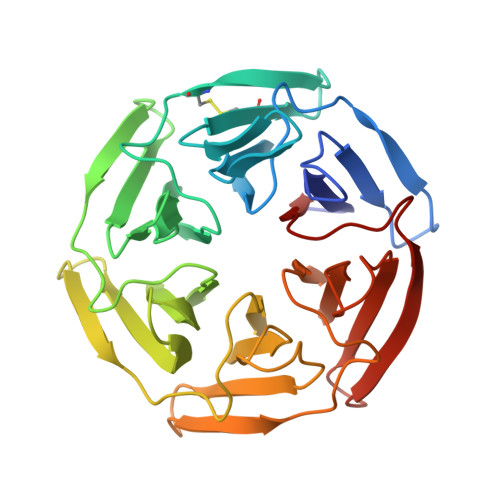Development of Keap1-Nrf2 Protein-Protein Interaction Inhibitor Activating Intracellular Nrf2 Based on the Naphthalene-2-acetamide Scaffold, and its Anti-Inflammatory Effects.
Yasuda, D., Toyoshima, K., Kojima, K., Ishida, H., Kaitoh, K., Imamura, R., Kanamitsu, K., Kojima, H., Funakoshi-Tago, M., Osawa, M., Ohe, T., Hirano, T.(2025) ChemMedChem 20: e202500474-e202500474
- PubMed: 40902199
- DOI: https://doi.org/10.1002/cmdc.202500474
- Primary Citation of Related Structures:
9UO8 - PubMed Abstract:
Nuclear factor erythroid 2-related factor 2 (Nrf2) and Kelch-like ECH-associated protein 1 (Keap1) axis is an attractive therapeutic target for various intractable diseases. Although protein-protein interaction inhibitors against Keap1-Nrf2 have been developed over the past decade, more structural expansion is needed to improve efficacy. In this article, several candidate compounds are designed and synthesized as novel Nrf2 activators and their intracellular Nrf2-activating effects are evaluated. Among the synthesized compounds, a novel naphthalene-1,4-(4-ethoxybenzensulfonamide) bearing a tertiary acetamide side chain at the 2-position strongly activated intracellular Nrf2. Particularly, the pyrrolidine-type acetamide compound showed the strongest intracellular Nrf2 activation. X-ray cocrystallography revealed that this compound can bind to the DC domain of Keap1. Additionally, the pyrrolidine-type acetamide compound induced the mRNA expression of the representative Nrf2 target genes heme oxygenase-1 and NAD(P)H:quinone oxidoreductase 1. Moreover, the compound exhibited anti-inflammatory effects in a lipopolysaccharide-stimulated macrophage cell line. Conclusively, these results suggest that the pyrrolidine-type naphthalene-2-acetamide is a promising compound for the development of Nrf2 activators that can be applied to treat inflammatory diseases.
- Faculty of Pharmacy, Osaka Medical and Pharmaceutical University, 4-20-1 Nasahara, Takatsuki, Osaka, 569-1094, Japan.
Organizational Affiliation:


















